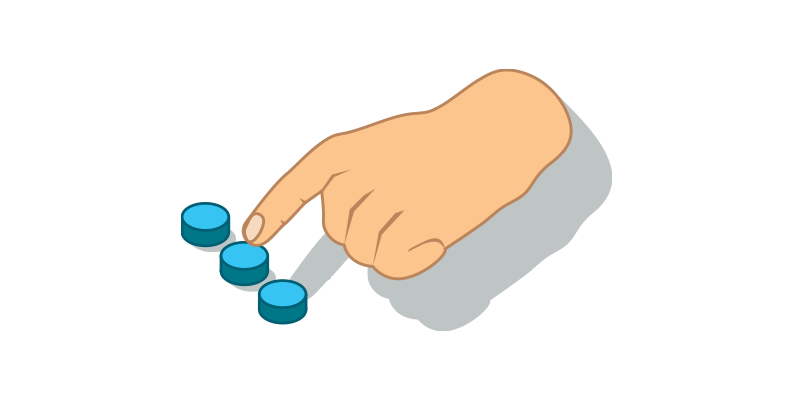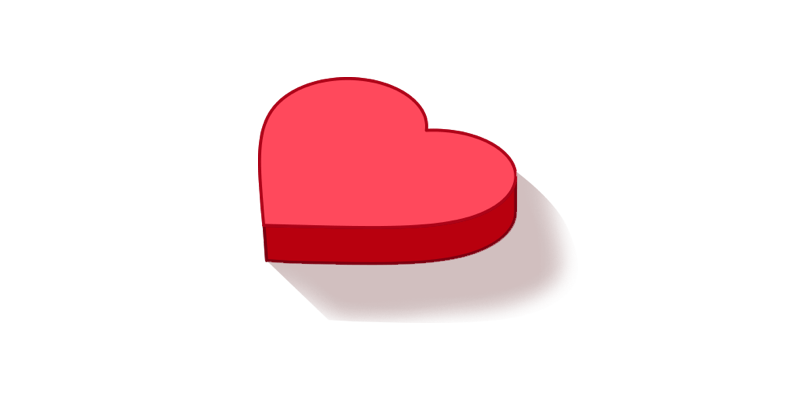Learning Through Play: Cognitive skills
Concentration, problem solving and flexible thinking by learning to tackle complex tasks and building effective strategies to identify solutions.
LEGO Braille Bricks activities’ aim is to work simultaneously on skills commonly worked at school (academic skills) or specific to visually impaired children (VI skills). Both are essential to deeply understand concepts and develop a breadth of skills.
Academic skills
- Discover alphabetical principle
- Recognize and name the majority of letters of the alphabet
- Discover the function of the written word
- Start producing written material and discover how it works
- Request proofreading
- Make suggestions for corrections to get closer to the written form (syntax, vocabulary, concordance of times)
- Participate in the writing of certain words
- Use the vocabulary to name the units of language: word, letter, syllable, sound, sentence, text, line, capital letter
- Identify « familiar words », first name, by using length, knowing that it corresponds to the length of the oral statement
- Identify letters and their order and then, depending on the letter, its sound value
- Recognize words more and more easily
- Apply phonic knowledge and skills as the route to decode words
- Respond speedily with the correct sound to graphemes (letters or groups of letters)
- Apply growing knowledge of root words, prefixes and suffixes (etymology and morphology), both to read aloud and to understand the meaning of new words
- Read further exception words, noting the unusual correspondences between spelling and sound, and where these occur in the word
- Read accurately by blending sounds in unfamiliar words
- Read words of more than one syllable
- Read most words quickly and accurately, without overt sounding and blending, when they have been frequently encountered
- Enrich the lexicon, acquire grammatical and lexical spelling
- Spell further homophones, words that are often misspelt (words containing various phonemes, common exception words, the days of the week, name the letters of the alphabet, using letter names to distinguish between alternative spellings of the same sound, learning to spell common exception words)
- Develop understanding concepts such as: leaving spaces between words, joining words and joining clauses, learning correct punctuation, including full stops, capital letters, exclamation marks, question marks, commas
- Copy and write, from memory, simple words and sentences
- Write, under dictation, known expressions
- Name, read, write and represent numbers
- Use numbers to show a rank, a position
- Build a suite identical to a proposed ordered suite
- Place an element knowing its position and respecting the direction of the course (the first, the second…)
- Group together by common points or contrast by differences
- Recognize the place value of each digit in a four-digit number (thousands, hundreds, tens, and ones)
- Use mathematical vocabulary to describe position, direction and movement, including movement in a straight line and distinguishing between rotation as a turn and in terms of right angles for quarter, half and three-quarter turns
- Construct the number to express quantities
- Order and arrange combinations of mathematical objects in patterns and sequences
- Estimate approximate quantities (a lot/not a lot…)
- Use numbers to represent quantities
- Utilize term to term correspondence to compare
- Produce an identical collection of the same number
- Compare collections organized differently in space to find those that are equipotent (have the same cardinal), determine those that have more or less elements than a given collection)
- Identify and represent numbers using objects and pictorial representations including number line, and use language such as equal to, more than, less than (fewer), most, least…
- Stabilize knowledge of small numbers
- Count quantities up to ten
- Give, show, take a requested quantity of elements
- Build a collection using counting
- Given a number, identify one more and one less
- Verbalize the decomposition of the number: e.g. "5 is 3 and 2"
- Associate the written number, constellations of dice, finger configurations, dot cards corresponding to a counted quantity (up to 10)
- Use numbers to count, organize, locate, compare
- Count, read and write up to 100, 1000, forwards and backwards, beginning with 0 or 1, or from any given number, in multiples of twos, fives and tens; count up and down in tenths; recognize that tenths arise from dividing an object into 10 equal parts
- Compare and order numbers; use <, > and = signs, round any number to the nearest 10, 100 or 1000; count backwards (including negative numbers; numbers with up to two decimal places
- Multiply and divide mentally (multiplying by 0 and 1; dividing by 1)
- Name, read, write, represent integers
- Produce and use various representations of simple fractions and decimal numbers
- Use and represent large integers, simple fractions, decimal numbers to count, order, locate, compare
- Recognize, find and name a half as one of two equal parts of an object, shape or quantity (same for a quarter)
- Recognize, find, name and write fractions (one third, one half…)
- Calculate with numbers
- Read, write and interpret mathematical statements involving addition (+), subtraction (–) and equals (=) signs; using formal written methods of columnar addition and subtraction
- Add and subtract numbers with up to 3 digits
- Recognize odd and even numbers
- Multiply two-digit and three-digit numbers by a one-digit number
- Use multiplication tables to multiply and divide
- Write operations using the multiplication (×), division (÷) and equals (=) signs
- Calculate with integers and decimals
- Recognize and use notions of alignment, right angle, equality of lengths, middle, symmetry
- Solve problems
- Engage in an approach, observe, question, manipulate, experiment, make hypotheses, by utilizing familiar mathematical tools or procedure
- Recognize and distinguish problems relating to additive, multiplicative, sharing or grouping situations, proportionality
- Collect and organize the information necessary to solve problems from a variety of media: texts, tables, diagrams, graphs, drawings
- Test, try several resolution tracks; check the results plausibility
- Solve problems that require the organization of multiple data or the construction of an approach that combines reasoning steps (addition and subtraction, missing number problems, using number facts, place value, involving multiplication and division, using materials, arrays, repeated addition; using simple fractions, integers, decimals)
- Anticipate the result of a manipulation, calculation, or measurement
- Solve problems involving quantities (geometric, physical, economic: lengths, masses, capacities, durations, prices) using integers and decimal numbers
- Practice scientific and technological approaches
- Formalize part of research in written or oral form
- Utilize appropriate tools and methods
- Make the link between measurement performed, units and tools used
- Keep a written or digital record of research, observations and experiments conducted
- Set up simple practical enquiries, comparative and fair tests
- Report observations, experiences, hypotheses, conclusions using precise vocabulary
- Mobilize digital tools
- Gather, record, classify and present data in a variety of ways to answer questions
- Tell, express, analyse
- Explain process of doing, playing
- Explain how to operate in a realization situation: by stating a few key words describing actions
- Interpret a success/failure by explaining the causes or consequences of an activity, use of a tool
- Provide for an implementation procedure
Visual impairment skills
- Recognize time concepts: now, later, fast, slow, before, after, during, past, future, next, finished…
- Recognize body parts
- Name body parts
- Touch own complex body parts on request
- Turn to face an object/person on request
- Recognize spatial relationships
- on, off, in, out, front, back, left, right, up, down, above, below, top, bottom, in front, behind, on top, underneath, next to, beside, through, middle, center, between, here, there, under, over, upside down, right-side up, first, last, together, apart, forward, backward, sideways, straight
- Understand the meaning of open, closed, slanted/diagonal, next (in a sequence), corners, edges, curves
- Recognize size concepts and relationships
- length, width, height
- big, little, thick, thin, wide, narrow, long, short, tall, fat
- Recognize, classify and sort shapes in 2 dimensions
- Recognize, classify and sort shapes in 3 dimensions
- Relate numbers 1 through 6 with braille cell positions/dot number
- Identify the spatial position of dots in a braille cell
- Identify the dot number of a specific dot in a braille cell
- Relate dot number 1 through 6 with finger and braille key positions to write with a braille typewriter or computer
- Learn how to track with fingers
- a line of dots from left to right
- rows of dots
- a line of braille and locate the next line, using two hand separately
- braille sentences when read aloud
- Develop tactile exploration
- Explore a braille page through touch: search with both hands over a page with a logical tactile strategy – top to bottom and side to side
- Locate the first braille line on a page
- Return from end of raised line to beginning and down to the next line
- Locate name in braille
- Develop tactile identification
- Beginning/end/breaks on a braille line
- Same/different braille shapes
- Spaces on a line of groups of braille symbols with one or more spaces between them
- Use hands and fingers in braille reading
- Use two hands to track braille, from left to right
- Use pointer finger as lead finger
- Use pinky finger to detect the end of a line
- Identify the braille characters
- letters (uncontracted braille)
- punctuation marks
- numerals 0-9
- mathematical signs
- Apply rules for braille contractions, punctuation and mathematical signs
Download & print

Learning Through Play: Creative skills
Coming up with ideas, expressing them and transforming them into reality by creating associations, symbolizing and representing ideas and providing meaningful experiences for others.

Learning Through Play: Physical skills
Being physically active, understanding movement and space through practicing sensory-motor skills. Spatial understanding and nurturing an active and healthy body.

Learning Through Play: Social skills
Collaborate, communicate and understand other people’s perspectives through sharing ideas, negotiating rules and building empathy.

Learning Through Play: Emotional skills
Understand, manage and express emotions by building self-awareness and handling impulses. Staying motivated and confident in the face of difficulties.